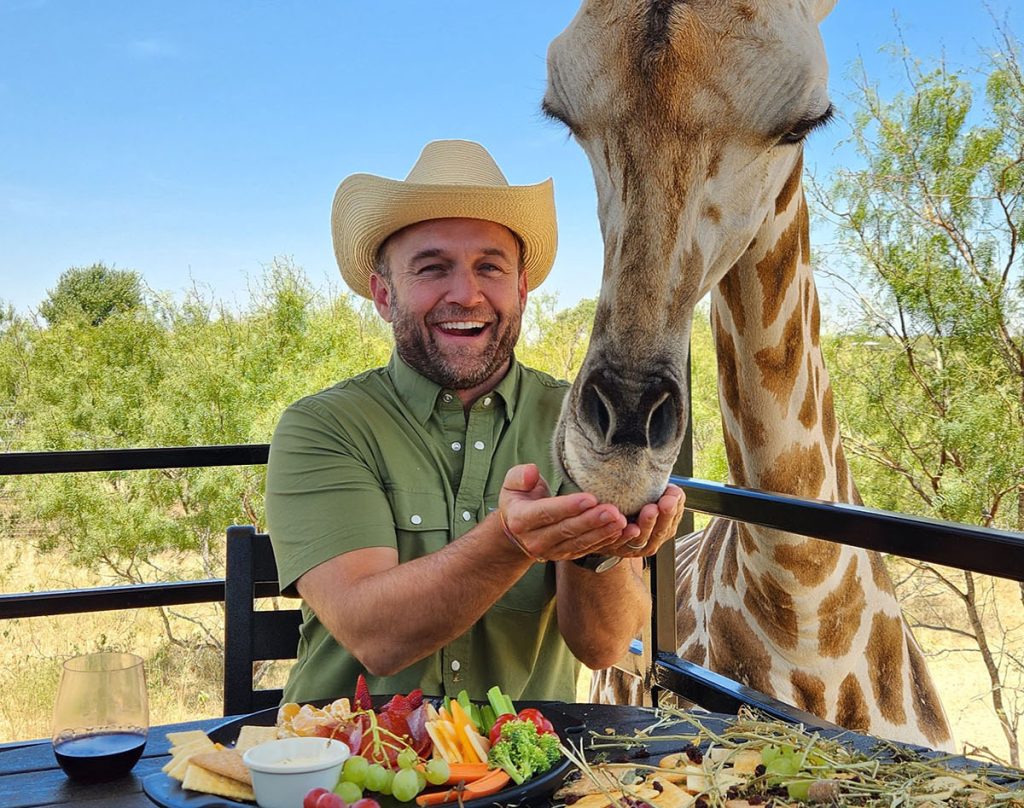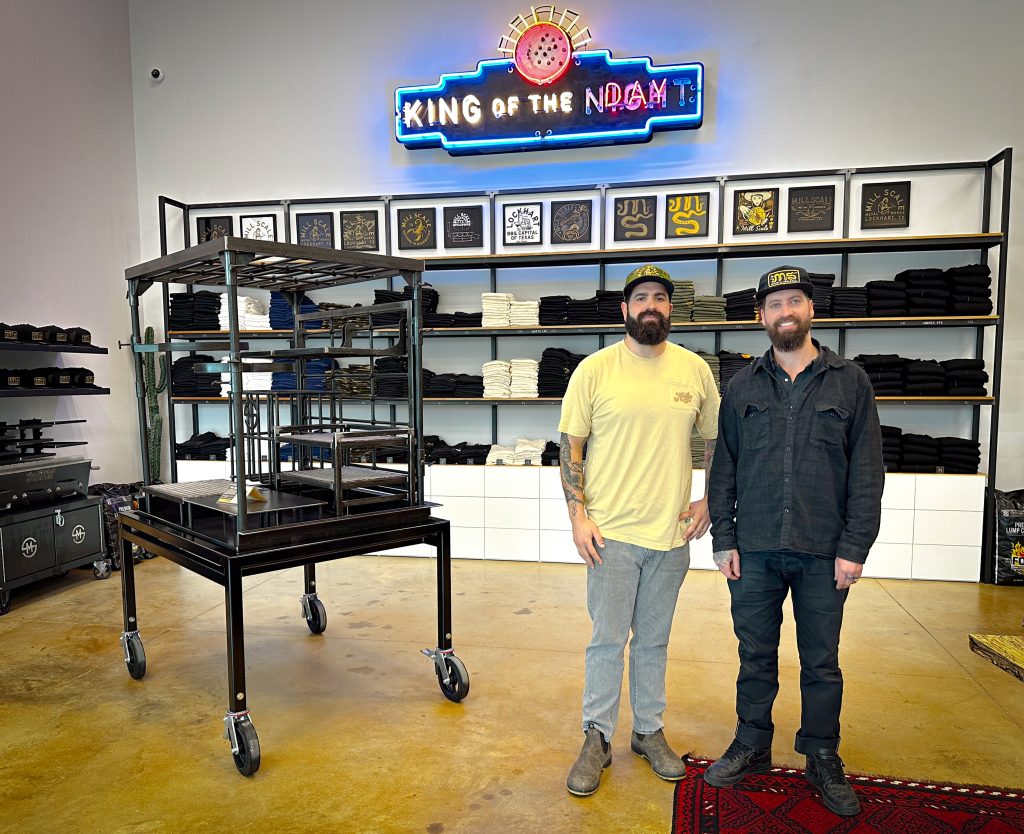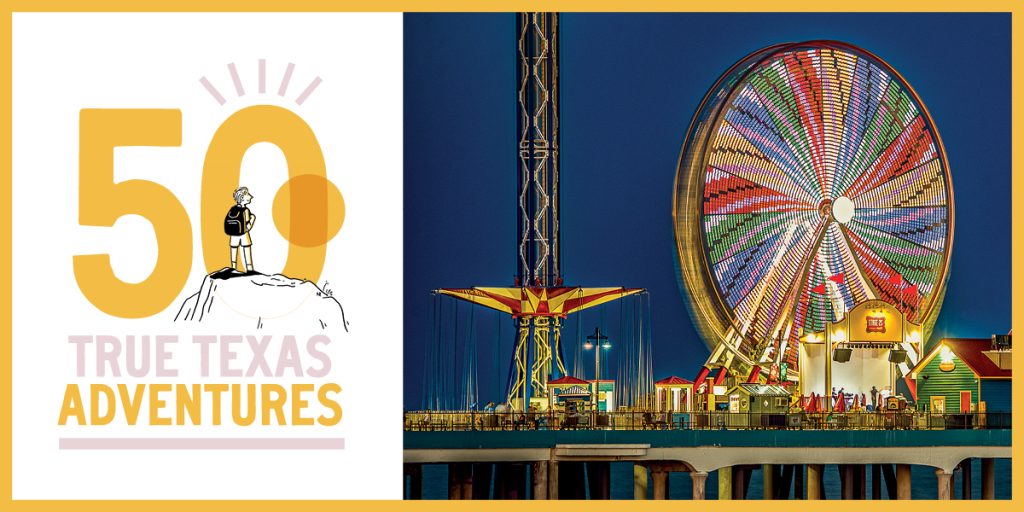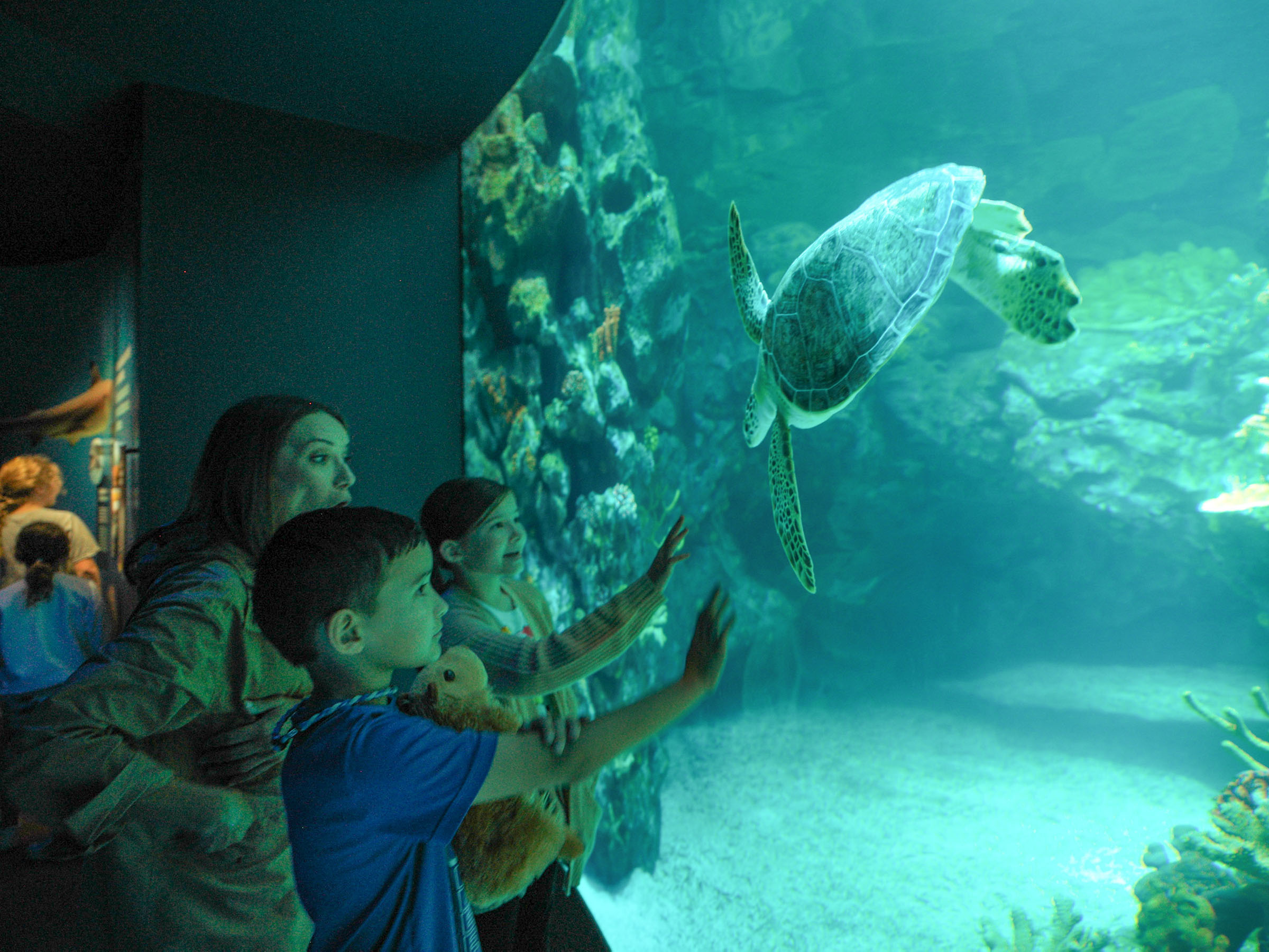
The Houston’s Zoo Galápagos Islands exhibit includes a 290,000-gallon aquarium. Photo by Daniel Ortiz for the Houston Zoo.
In 2018, the Houston Zoo announced an ambitious capital campaign to revitalize the sought-after Texas destination, introduce additional attractions to highlight the world’s animal population, and focus on issues related to conservation and how best to protect the planet.
With the $150 million raised, the 101-year-old Houston Zoo has rolled out a series of new projects and updated exhibits, including the Hamill Foundation Black Bear Exhibit, the Kathrine G. McGovern Texas Wetlands, South America’s Pantanal, and the largest and most ambitious centerpiece within the campaign: the Galápagos Islands, which opened to the public on April 7. (Be sure to get a reservation, as the lines to get in have been long, according to one Reddit poster.)
Situated roughly 600 miles from the coast of Ecuador, the Galápagos Islands are a chain of volcanic islands that feature an impressive and unique array of plant and animal species, most of which are only found in this part of the world, including Galápagos penguins and marine iguanas. And while this isolated ecological destination has long fascinated people across the world, its Eden-like ecosystem isn’t easily accessible to many. That’s why the Houston Zoo’s latest exhibit is one of a kind: outside of the real Galápagos Islands it’s the only zoo exhibit in the world that highlights this archipelago.
Houston Zoo President and CEO Lee Ehmke says the idea for the groundbreaking project came from brainstorming sessions on how best to update the over 50-year-old sea lion habitat in the zoo. The team ended up deciding to tie a sleek new sea lion habitat to a place where the zoo was already doing and supporting conservation-related work: the Galápagos Islands. “[It] allows us to tell a lot of different stories about this unique place that no one has done an exhibit about before,” he says.
Because of laws that protect the Galápagos Islands’ ecosystem, marine life, and land-based species, none of the animals in the exhibit are actually sourced from the Galápagos, but most are closely related species. The Galápagos tortoises featured in the space are actually a generational offspring of Galápagos tortoises brought to the United States in the early 1900s. The exhibit also features California sea lions, blue iguanas, Humboldt penguins, blacktip reef sharks, bonnethead sharks, stingrays, giant sea horses, Sally Lightfoot crabs, jellyfish, and other extraordinary creatures.
The vast land and aquatic space that houses these species, many of which are threatened or endangered, are a testament to life in the Galápagos, with thoughtful additions such as 77,600 square feet of fabricated lava rocks, nearly 600 individually fabricated corals, over 1,275 trees, shrubs, and cacti, and a sea lion cove with wave machines and deep plunges for the agile marine mammals to feel right at home.
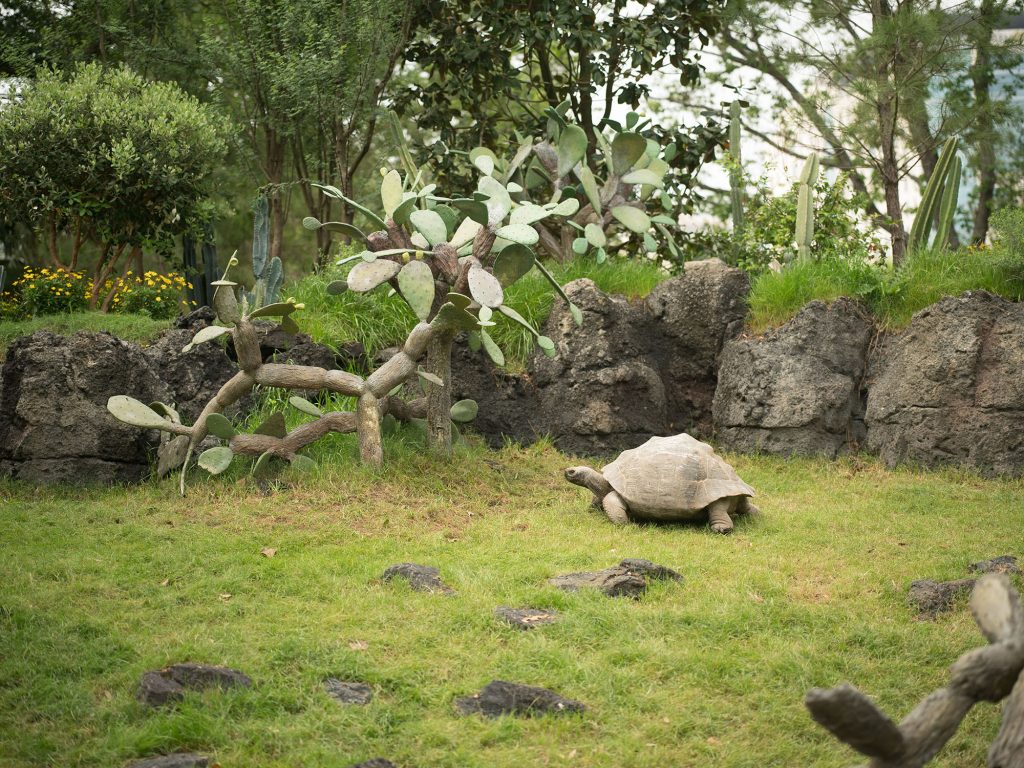
The Galapagos Islands Exhibit features tortoises that are generational offspring of Galápagos tortoises brought to the United States in the early 1900s. Photo by Daniel Ortiz for the Houston Zoo.
Walking into the detailed, sprawling land and ocean exhibit, one feels transported from the populous Texas city straight to the remote Ecuadorian islands. The detailed exhibit is, by far, the Houston Zoo’s most realistic and true-to-its-source material. At the entrance of the exhibit’s towering crags and boulders, which features lifelike, stone iguanas, you’ll see slow-moving, lettuce-devouring tortoises descend evergreen and rocky hills to the water below.
Off to the side, you’ll catch social, trick-performing sea lions diving into the water and waving to admirers in the stands at the encouragement of their trainers. Waddling Humboldt penguins—a first-time feature for the Houston Zoo—play on a mock volcanic rock beach and revel in diving headfirst into the water, much to the equal delight of adults and children who marvel at them beyond thick glass.
It’s easy to spend far too long staring into the illuminated abyss of the 290,000-gallon “One Ocean” aquarium, which houses various fish, sea turtles, small sharks, and rays. But there is one spot in particular where you will find guests standing shoulder to shoulder to get a glimpse at something quite spectacular. Ehmke says attendees have found favor with the 40-foot acrylic underwater tunnel where playful California sea lions swim above and all around guests, which brings out a more engaging, social side in the animals.
“It’s clear that we’re already seeing that sea lions enjoy watching and interacting with people, so we know that’s going to be a huge highlight for everyone,” he says.
And while Ehmke hopes guests will fall in love with all the animals featured throughout this new exhibit, one of his greatest hopes is that guests come away with a better understanding of conservation and how individual behaviors have an inevitable effect on the world.
“We want people to walk away with the idea that there’s really one ocean. We call them all separate oceans, but they really are all connected,” he says. “And there’s something that everyone does in their daily lives, whether they know it or not, that has an impact on the ocean, even living in the middle of Texas.”
Kevin Hodge, vice president of animal operations, worked with his team and Association of Zoos and Aquarium-accredited organizations for about two years in planning and sourcing all the species that would come into the Galápagos Islands exhibit. Hodge has a first-hand look into the lives and health of animals throughout the facility and is thoroughly impressed with how the zoo’s new animal habitats are inspiring rare, never-before-seen behaviors in the creatures that inhabit them, saying that even the Galápagos tortoises, who were once housed on a flat terrain at the zoo, are much more active and mobile among their habitat’s lava rocks, cacti, mud wallows, and pools.
“We’re seeing them move around that area more than what they did in their old habitat because it’s more natural and more what the tortoises were built and designed for,” he says. “That’s the part that makes me happy: not only what we’re doing is to save animals in the wild, but also what we’re doing is to make sure these animals have the best life possible.”
Before the Galápagos Islands debuted to the public on April 7, the Houston Zoo hosted an opening ceremony on April 6 where local figures like Houston Mayor Sylvester Turner and Harris County Judge Lina Hidalgo spoke about the opening of the long-anticipated exhibit.
Hidalgo focused her remarks on the continued need to highlight and champion the zoo’s conservation efforts, while Turner, who is in his last year in office, spoke to the crowd about how this new exhibit exemplifies the city’s growing diversity and cultural influences.
“We often say we’re the most diverse city, and we often say you can come to Houston and literally on any given day travel the world,” he told the crowd. “You may not get to Ecuador soon, you may have never gone, but when you go through this exhibit you literally can say that you’ve experienced some of the beauty that exists within Ecuador right here in the city of Houston.”
Admission to the Galápagos Islands exhibit is included with general admission to the Houston Zoo and is free for members. You can reserve tickets to visit the Houston Zoo here.
